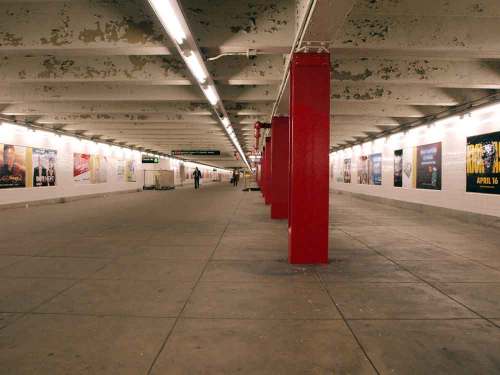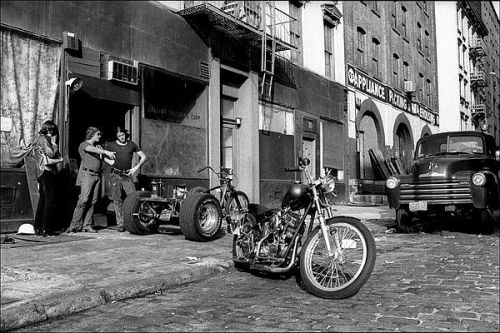 Steve Cannon turned 75 the week before last. His birthday party was held at the Tribes gallery, his home since the 70’s, with readings by Karl Watson, Michael Carter, Shalom Naumen, and the ‘Unbearable’s book release party.
Steve Cannon turned 75 the week before last. His birthday party was held at the Tribes gallery, his home since the 70’s, with readings by Karl Watson, Michael Carter, Shalom Naumen, and the ‘Unbearable’s book release party.
I got there late, after both the readings were over. The food trays picked clean, though half a box of wine remained. Steve was sitting on his living room couch in front of the apartment doorway, the same place I’ve found him almost every time I’ve gone to see him over the last 20 years. Drinking wine, smoking, and hanging out with the dozens of people pressed in around him.On the walls were the striking photographs of the GirlEye show curated by the gallery. Everyone was drunk. It was just like old times.
Steve comes from New Orleans originally, but he’s been in New York since the 70;s. He is a poet, playwright, and novelist, and was a long-time professor at CUNY until he retired in the early 90’s. In the 70’s, he had a bestselling novel: “Groove Jive & Bang Around”, which gave him the money to buy the building he lives in now. He is almost fully blind, and has been so for the last dozen years, the end result of glaucoma. He has people read his books and newspapers and emails to him, but still gets out to shows and readings. He has plenty of help around the studio, and many people drop by. I doubt he’s alone much.
When I first started going down in the early 90’s, the gallery was just starting up and Steve could still see, though he wore dark glasses, even at night. On warm days, he hung out on his stoop, and everyone he knew from in and around the neighborhood would drop by. Some days, you could get a reasonable cross-section of the Lower East Side of the time – young white bohemians like myself, old black poets 
and writers who’d known Steve for decades, local Puerto Ricans, drug addicts. Many of the people around him were stalwarts of the 80’s Lower East Side writing music art drug scene. Some, like the poet John Ferris, had hung out in the political and writing scene in 60’s and 70’s Harlem.
I liked Steve and John and the other guys, and liked the connection to black NY history and art. Most of all, I liked to listen to them talk politics. They really knew their stuff, and in the self-referential, curiously parochial New York of the day, it was refreshing to talk with people who knew what was happening in what was left of the Soviet Union, Iraq, or Africa, unfiltered by the lens of the New York Times or CNN.
I had another connection with Steve: we’d both squatted in London, in roughly the same neighborhood, though 20 years apart – me in the late 80’s, Steve in the 60’s. I’d been in Westbourne Park, then virtually abandoned, Steve in Kilburn, the then Irish neighborhood in the north of the city. “We thought we were broke,” Steve said, “but there was a bunch of motherfuckers across the street – they had nothing at all! We were rich compared to them!”
 By the mid-90’s, the Tribes gallery was becoming something of a local institution. Despite the glaucoma, Steve was involved in the rebirth of the Nuyorican Poet’s Cafe, in the Living Theatre, and Bullet Space. His stoop, and his gallery became a popular hangout for a lot of kids arriving in town from Europe, Japan, across America. Bit by bit, I stopped going down.
By the mid-90’s, the Tribes gallery was becoming something of a local institution. Despite the glaucoma, Steve was involved in the rebirth of the Nuyorican Poet’s Cafe, in the Living Theatre, and Bullet Space. His stoop, and his gallery became a popular hangout for a lot of kids arriving in town from Europe, Japan, across America. Bit by bit, I stopped going down.
But in a Lower East Side I hardly recognize, it’s good to see Steve, and his piece of history, still providing the conduit to the past.












 Back when coffee was just coffee
Back when coffee was just coffee



Spring in the ‘hood: Easter Sunday
Posted in Bed-Stuy, Comment, Gentrification, Notes from around the 'hood., Street Art, tagged Bed-stuy, Gentrification, Recession on April 4, 2010| Leave a Comment »
The blossoms are out on the tree outside my front door, almost obscuring one of the last empty houses on the street (five years ago there were at least a half-dozen). The slightly menacing and very monotonous tingle of the ice cream truck echoes up and down and all around the street . . .
Saturday morning, the block association on my street came out to clean up the planters, getting ready to put out the flowers in a week or two. People are out on the stoop, kids are on the pavement, and the first of the killer motorcycles has come roaring down the street. A few more fire trucks than usual were out today, but so far, no major repeat of the craziness that came with the warm weather a couple of weeks ago.
The dogs are out as well, barking in the back yards for any reason at all, their barking magnified by the canyon formed by the backs of the three and four story brownstones . . .
Down Greene Ave. one condo is almost finished, another sits three-quarters finished and almost wholly abandoned, the guard post unmanned most of the time, windows smashed out on the upper levels, a the two by fours and netting of a personnel barrier hanging off an unfinished balcony. The ten story tower, the tallest building in the area, looks over the neighborhood like an unmanned lighthouse. The almost finished condo, however, advertises the usual luxury flats and, from the polished condition of the flats inside the windows, the owners seem confident they’ll sell. The sister condo – almost identical in size and style – is going up just as fast.
On The Street that Gentrification Forgot, new housing built a year or two ago has made it seem almost like a normal street. Almost. An auto body shop has been converted into a woodworking studio where, amongst other things, the owners make violins. A yoga studio, sure sign that the neighborhood is reaching the gentrification critical mass, is rumored to be opening in a converted warehouse loft. Yet just around the corner is another condo, thin as a razor, also three-quarters complete and seemingly abandoned. The lower levels are open, guarded by a wooden fence that is so flimsy the whole thing fell right into the street during the storm a couple of weeks ago – where it remained for three days until someone finally came to put it right. I keep waiting for squatters to move in and inhabit the spaces with the floor to ceiling windows and, I’m sure, fine views of the neighborhood.
Up on Classon and Greene, in the old liquor store building, a mural has been painted on the side facing Greene, obscuring some of the old historic logs of companies that don’t exist anymore. Two young guys, one black, one white, were hard at work a couple of weeks ago, and I thought they might be producing some sort of community mural. Instead, it is an ad disguised as a community mural. It reads:
Like Jeremiah wrote in a post last week, street art is being/has been colonized by the corporate world so “sometimes . . . it’s hard to tell if you’re looking at gallery art, graffiti, or advertising.. .”What’s curious about this mural is its sheer dippiness, and its location on the border of Clinton Hill and Bed-Stuy (and across from another finished, but empty condo building). This makes no mistake that it is advertising, according to the video on the website it is part of a nationwide team of real estate agents “working with the best local talent to reimagine the way Fiesta gets advertised”. Whatever the case, I sincerely hope the mural it is tagged and defaced (in the grand NY tradition) very soon.
Read Full Post »